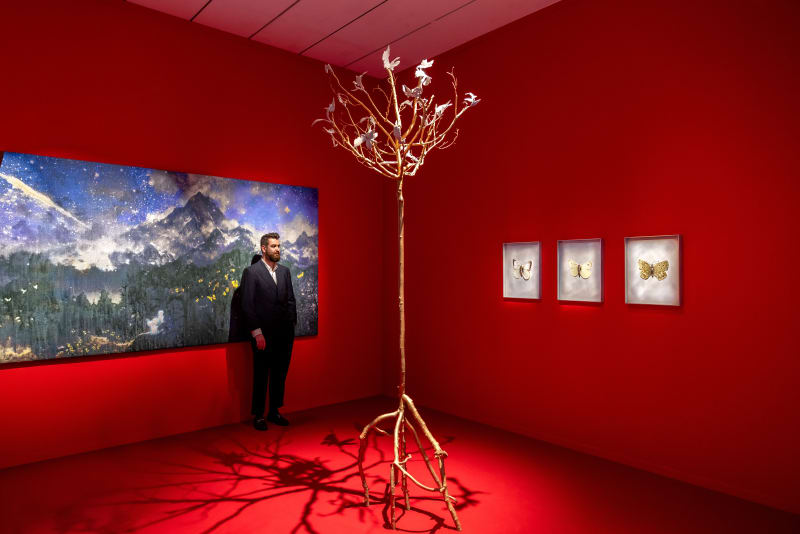Excerpt from a forthcoming interview with aurèce vettier
In addition to this interview, aurèce vettier's work is featured in two major museum exhibitions: Échos du passé, promesses du futur at macLYON (through July 13, 2025), and Le Monde selon l'IA at Jeu de Paume, Paris (through September 21, 2025). Both exhibitions explore the intersection of artificial intelligence, memory, and ecology-central themes in aurèce vettier's ongoing practice.
JS: How would you describe your practice?
av: My work is an unrelenting attempt to dream and recreate, fragment by fragment, a world that resonates with the one we know-a world that almost resembles ours, but not quite. [...] To reconstruct this world, I assemble elements of a personal mythology infused with my preoccupations. This involves a large body of data, ranging from personal information-texts, family photographic archives-to materials mechanically sourced from the Internet. These are then sorted, prepared, labeled, and processed using custom artificial intelligence (AI) algorithms to digest the data and generate new forms, or essences. Finally, these ideas and proposals, born from the multidimensional universe of data, are projected back into reality in the form of hybrid objects, allowing me to tell an ongoing story.
JS: Could you elaborate on your creative process, particularly for these [bronze] sculptures?
av: [...] Starting from images of impossible plants generated by GANs, I create 3D models of this vegetation using another type of algorithm, known as "lifting" algorithms. I then venture into the forest to collect small fragments of branches that precisely match the sections of these 3D models. From there, I assemble wooden maquettes, 3D-print leaves, and cast these maquettes in bronze before assembling, chiseling, and patinating them. The artisanal gesture-crucial in my practice, is an invitation to compromise and allows projection into reality. [...] Gradually, this nature unfolds: trees begin to rise from the ground. Initially frail, they grow stronger. Simultaneously, a timid fauna begins to emerge, starting with sporadic flocks of rare butterflies, which I began showing this year in the United States with Spaceless Gallery.
JS: How do you define the contribution of artificial intelligence to your practice and to the
contemporary world?
av: For me, artificial intelligence is not a medium; I see it primarily as a tool-a very powerful one,
certainly-but one whose generated forms must absolutely lead to the creation of physical objects and
experiences, even if we still see too little of that today.
Increasingly, I realize that a technology as potent as AI has the potential to change the role and place of the artist. Since Marcel Duchamp, the object has perhaps become less important than the experience it can offer. Now, I believe we are moving from the experience of the object to something else. It seems to me that the artist must involve their own being and the world in a form of "adventure"-though I still find the word imperfect.
I am extremely enthusiastic about the possibilities offered by AI tools, but I am also aware of the need to
democratize access to creative expression. I am convinced that one day, many of us will want to use AI
reflexively-training custom models based on our personal data to enhance introspection, creation, and the exploration of new possibilities. [...]
I am committed to contributing to the real world as an artist, helping to gradually repair it. For this reason, I've begun collaborating with foundations and NGOs dedicated to preserving life, reforestation, and ecosystem restoration, with precise measurements of the outcomes. My hope is that, in the medium term, placing a bronze tree in a collection might help restore a certain number of hectares of forest, care for a specific number of animals, or support a community with measurable results. I don't plan to communicate openly about this, but rather to embed it deeply into the economic model of my practice.
Credits:
Interview originally conducted by Jérôme Sans.
With thanks to Dragon Hill Residency, Unit London, and aurèce vettier.
Follow on Instagram: @dragonhillresidence, @unitlondon, @jeromesans, @aurecevettier


